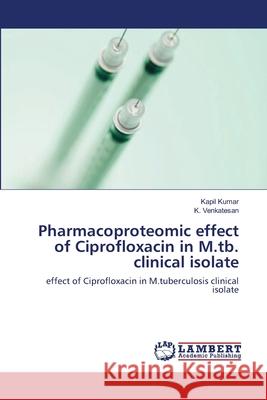Pharmacoproteomic effect of Ciprofloxacin in M.tb. clinical isolate » książka
Pharmacoproteomic effect of Ciprofloxacin in M.tb. clinical isolate
ISBN-13: 9783659126031 / Angielski / Miękka / 2012 / 88 str.
Tuberculosis (TB) is the major cause of death worldwide. The enormity of the problem has been further worsened by the emergence of multi-drug resistant (MDR) strains and the dual infection with HIV. A newly identified TB threat which leaves patients virtually untreatable using currently available anti-TB drugs is XDR-TB. Fluoroquinoloes are increasingly being used in the treatment of mycobacterial infections especially, tuberculosis and leprosy. Ciprofloxacin is an antibiotic that is used to treat bacterial infections. Ciprofloxacin stops the multiplication of bacteria by inhibiting the reproduction and repair of their genetic material (DNA). Ciprofloxacin is used to treat infections of the skin, lungs, airways, bones, and joints caused by susceptible bacteria. Although the primary mechanism of their action is by inhibiting gyrase, other possible mechanisms can not be ruled out. The mechanism of quinolone resistance involves primarily mutations in the A and B subunits of the DNA gyrase. Another mechanism of resistance to quinolones is the efflux of the drug out of the cell. It is possible that fluoroquinolones may have some other mechanisms of action also.











